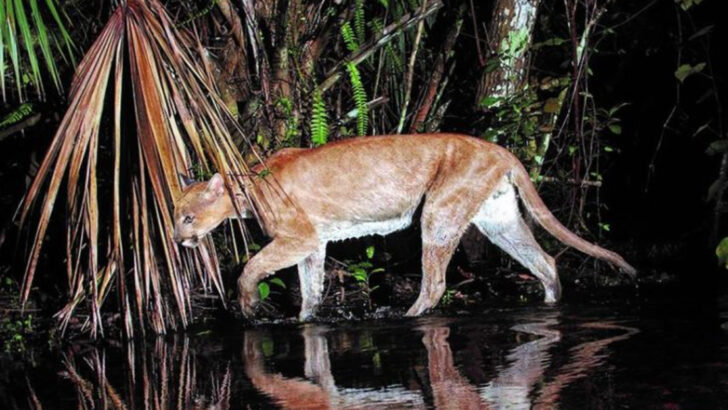Some of Georgia’s forests bite back.
You might think it’s just birdsong, breezes, and peace under the pines—but deep in those woods, something’s watching. Or slithering. Or ready to sting, snap, or strike.
From venomous vipers to stealthy predators with paws the size of dinner plates, these forests hide more than just squirrels and deer. And just because you don’t see them doesn’t mean they’re not there—lurking behind brush, curled beneath leaves, or perched high in the trees.
So before your next hike through Georgia’s wilder corners, take a look at who—or what—might be hiding in plain sight.
Some creatures don’t want to hurt you.
But some won’t hesitate.
Eastern Diamondback Rattlesnake
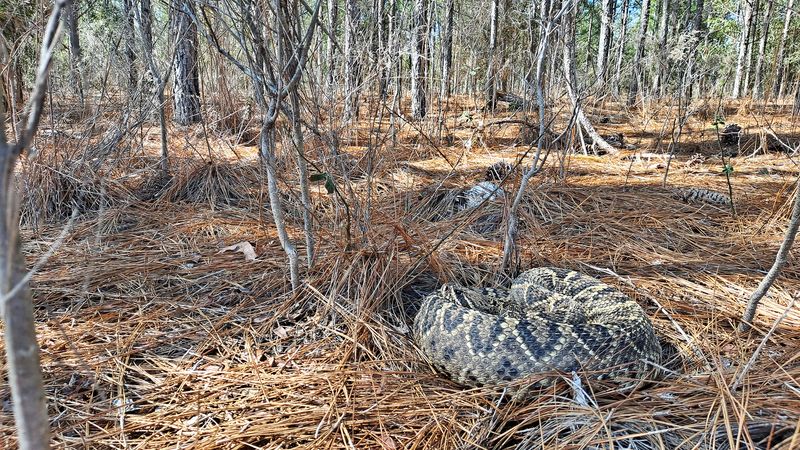
With a distinctive diamond pattern on its back, the Eastern Diamondback Rattlesnake is a sight to behold in Georgia’s forests. This venomous serpent can grow up to eight feet long and is known for its potent venom.
While they prefer to avoid human contact, rattlesnakes may strike if they feel threatened. Their rattle serves as a warning to keep your distance.
If you hear this iconic sound, it’s best to back away slowly and give the snake plenty of space. Remember, they’re more afraid of you than you are of them!
American Black Bear
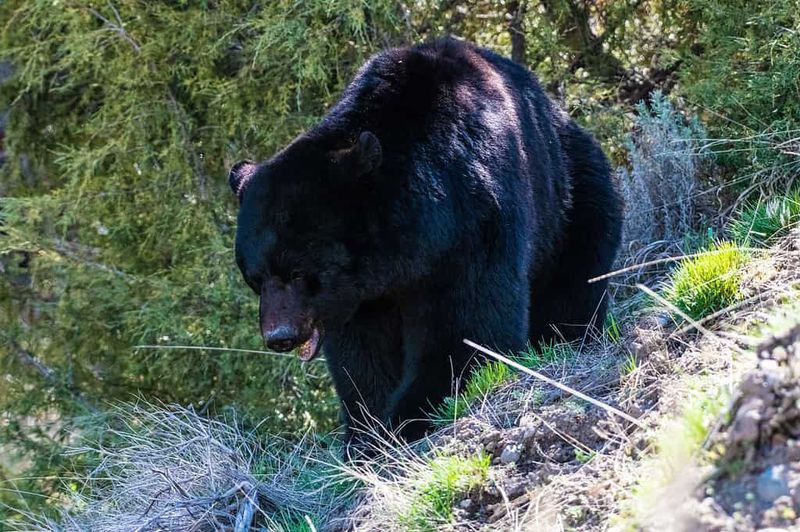
Despite their name, American Black Bears can range in color from black to brown. These bears are generally shy but can become aggressive if they feel cornered or if a mother bear senses a threat to her cubs.
They are powerful creatures, capable of running at speeds of up to 30 miles per hour. Always store food securely when camping in bear country.
If you encounter a bear, do not run. Instead, speak in a calm tone and slowly back away, allowing the bear to retreat without feeling threatened.
Coyotes
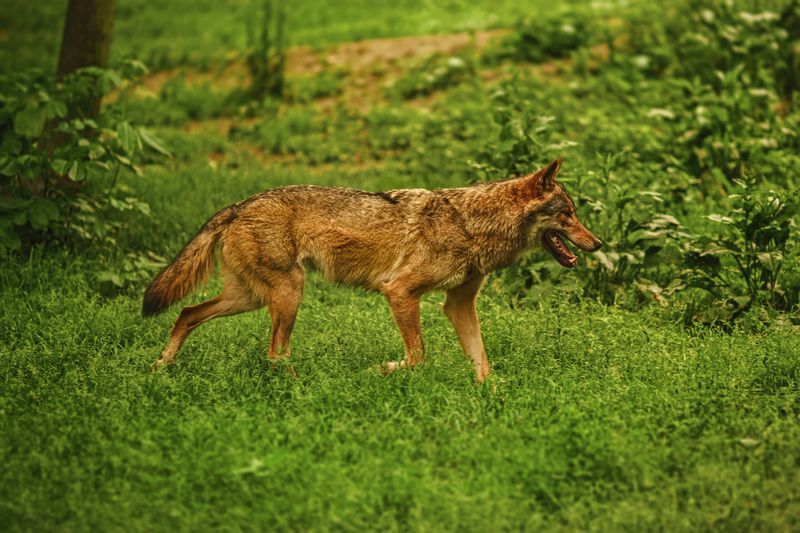
Coyotes are highly adaptable animals often found in Georgia’s forests. Known for their cunning nature, they can hunt small mammals and even prey on livestock or pets.
While they’re generally nocturnal, coyotes can sometimes be seen during the day, especially in areas where food is abundant. Their eerie howls can be unsettling to hear echoing through the woods.
If you encounter a coyote, make yourself appear larger and make loud noises to scare it away. They typically avoid humans unless habituated to human food.
Wild Boar
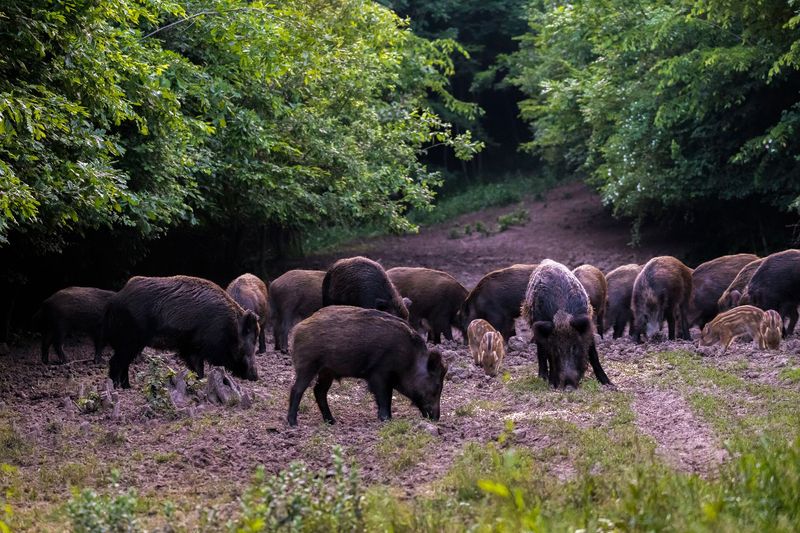
Wild boars are formidable creatures, with sharp tusks and powerful bodies. These animals can be aggressive, especially if they feel threatened or if a mother is protecting her young.
They are known to cause extensive damage to the forest floor while foraging for food. Boars are omnivores, feeding on anything from roots to small animals.
If you encounter a wild boar, it’s crucial to maintain a safe distance and avoid sudden movements. Their unpredictable nature makes them one of the more dangerous forest inhabitants.
Timber Rattlesnake

The Timber Rattlesnake is another venomous snake residing in Georgia’s forests. With their unique combination of dark and light bands, they blend well into the forest floor.
Timber rattlesnakes are generally non-aggressive but will defend themselves if provoked. Their venom, however, is potent and requires medical attention if bitten.
When hiking, stay on designated trails and watch your step. These snakes often bask in the sun on rocks or trails to regulate their temperature.
Copperhead Snake
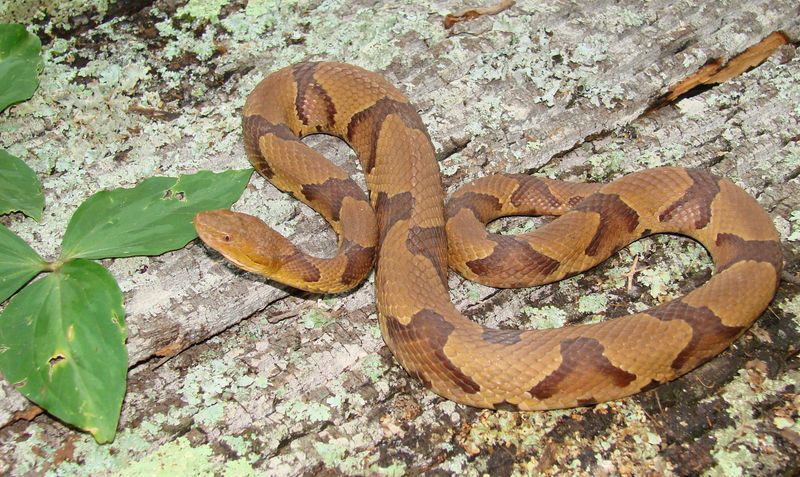
The Copperhead Snake, named for its reddish-brown head, is a master of camouflage. Often found among leaf litter, they’re hard to spot, making them particularly dangerous for hikers.
This snake’s bite is rarely fatal but can cause significant pain and swelling. They usually bite only if stepped on or threatened.
Always be vigilant while walking through such terrains. Wearing thick boots can help reduce the risk of snake bites.
Florida Panther
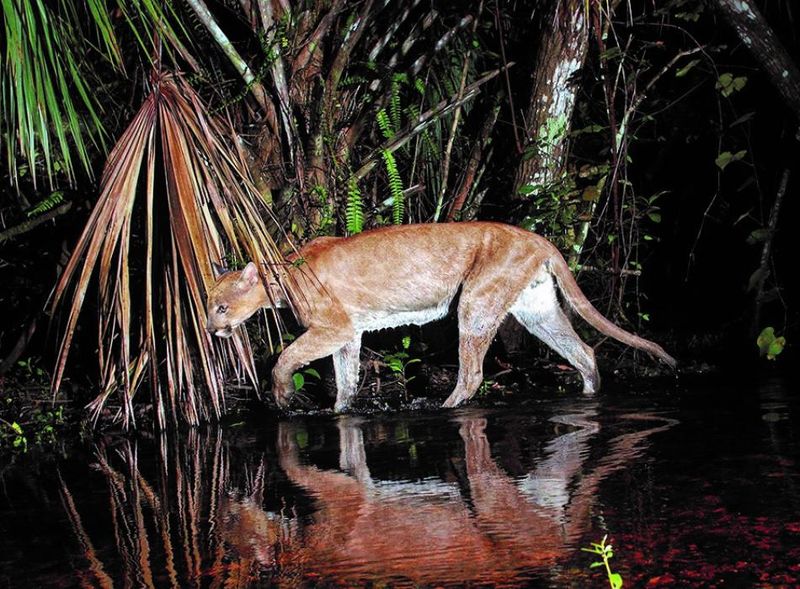
The elusive Florida Panther occasionally ventures into Georgia’s forests. With a tawny coat and a long, graceful body, they are a sight to behold.
These big cats are extremely territorial and can be dangerous if encountered. Panthers are primarily nocturnal and skilled hunters.
If you see a panther, remain calm, avoid direct eye contact, and back away slowly. Making yourself appear bigger can deter an attack.
Alligator
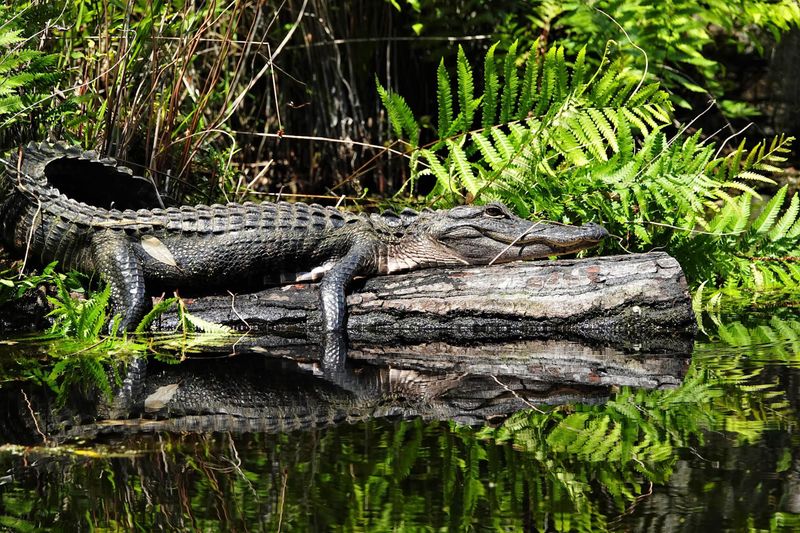
Alligators are often found in the swampy areas of Georgia’s forests. These prehistoric reptiles can grow up to 15 feet in length and weigh over 1,000 pounds.
While attacks on humans are rare, they can be deadly. Alligators often lie in wait, largely submerged, before ambushing prey.
Always maintain a safe distance from water bodies where they may reside, and never feed or provoke them, as this can lead to dangerous encounters.
Bobcat
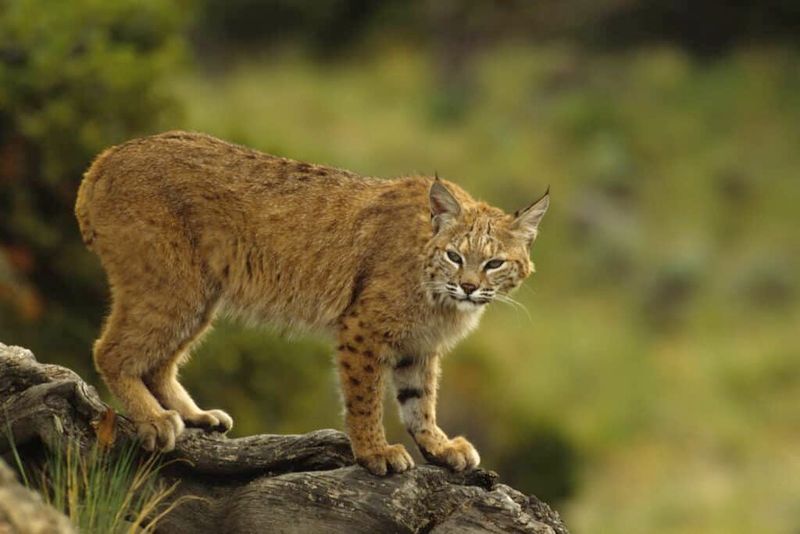
Bobcats, with their tufted ears and short tails, are elusive and rarely seen. These solitary hunters are capable of taking down prey larger than themselves.
Though they usually avoid humans, bobcats can become aggressive if cornered or if their young are threatened. They are most active during twilight hours.
If you encounter a bobcat, make yourself appear larger and make noise to scare it off. They typically retreat unless they feel trapped.
Eastern Coral Snake
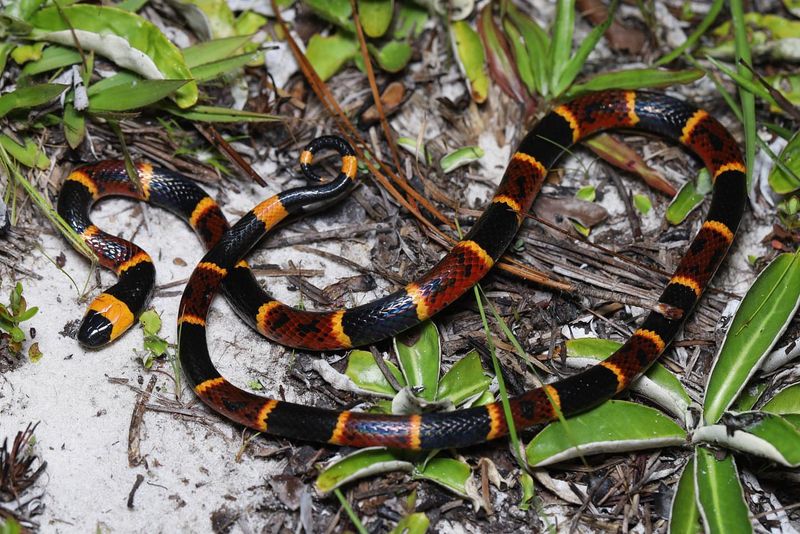
The Eastern Coral Snake, with its striking bands of red, yellow, and black, is a venomous snake found in Georgia. Its small size belies its dangerous nature.
While their venom is highly toxic, coral snakes are generally reclusive and prefer to hide in leaf litter and under logs.
If you spot these colorful snakes, it’s best to admire from a distance and not attempt to handle them. Their motto: “Red touch yellow, kills a fellow.”
Red Fox
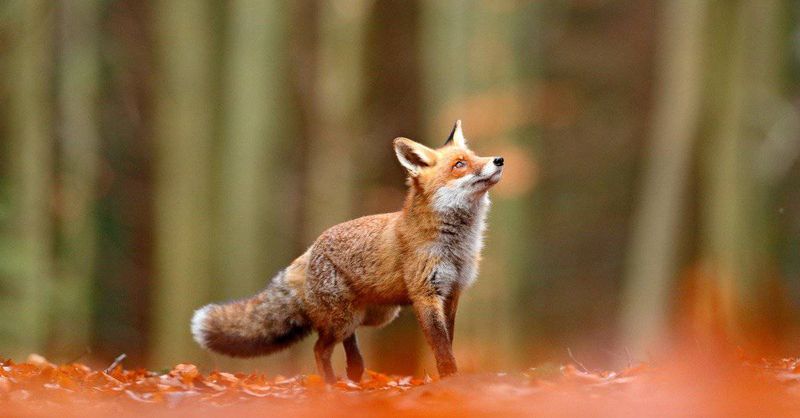
The Red Fox, with its vibrant red fur and bushy tail, is a common sight in Georgia’s forests. These cunning creatures are skilled hunters, often preying on small mammals and birds.
Though primarily nocturnal, they can be active during the day, especially in areas with abundant food. Foxes are generally wary of humans but can become bold if accustomed to human presence.
To avoid attracting foxes, keep food sources secure and maintain a clean campsite when outdoors.
Eastern Screech Owl
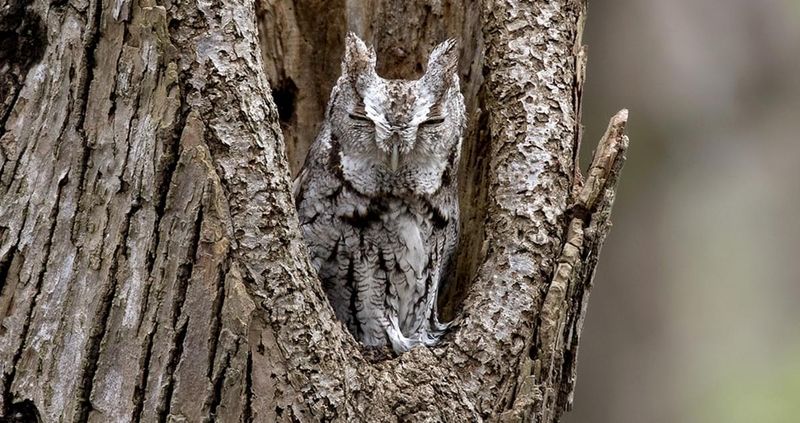
The Eastern Screech Owl is a master of disguise, blending seamlessly with the bark of trees. These small, nocturnal birds are known for their haunting trills and whinnies.
While they pose no direct threat to humans, their eerie calls can startle those unaccustomed to forest sounds. They’re skilled hunters, preying on insects and small mammals.
If you’re lucky enough to spot one, enjoy their presence from a distance, respecting their role in the ecosystem.
Raccoon
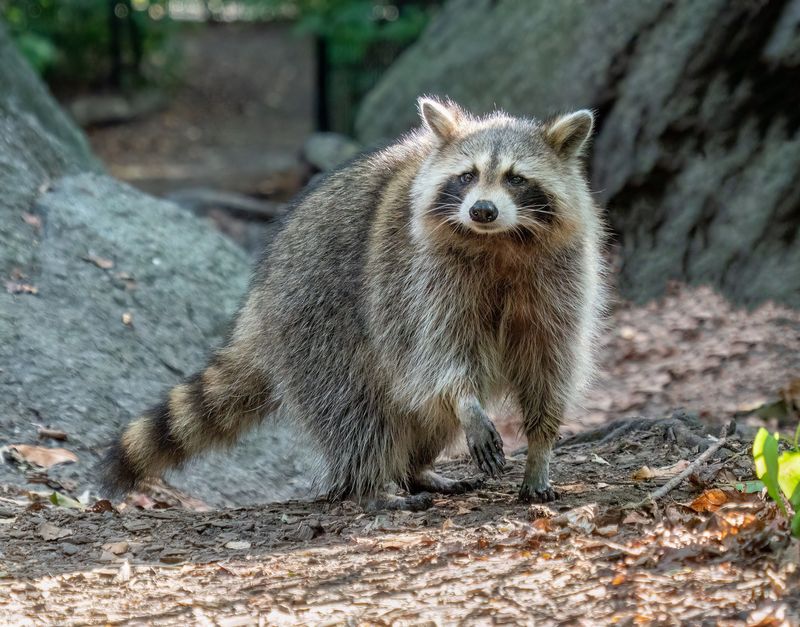
Raccoons, with their distinctive masked faces and ringed tails, are notorious for being both clever and opportunistic. These nocturnal creatures can be found rummaging through forest debris in search of food.
While generally harmless, raccoons can carry diseases like rabies. They often raid campsites and garbage, so securing food is essential.
If you encounter a raccoon, observe from a distance and ensure food and trash are stored properly to prevent attracting them.
Black Widow Spider

The Black Widow Spider, recognized by its glossy black body and red hourglass marking, spins its web in the shadows of Georgia’s forests. This spider’s venom is potent, causing severe pain and discomfort.
Black widows are shy and only bite when threatened. They often dwell in dark, undisturbed areas like wood piles or abandoned burrows.
To avoid bites, wear gloves when handling outdoor materials and be cautious when exploring the forest’s nooks and crannies.
Brown Recluse Spider
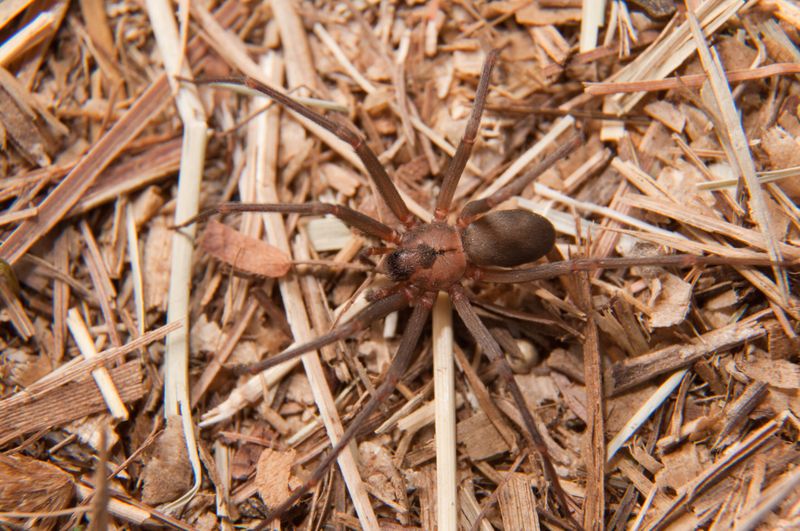
The Brown Recluse Spider, with its distinctive violin-shaped marking, is elusive and prefers to hide in secluded spots. Though small, its bite can cause significant tissue damage.
These spiders are not aggressive and typically bite only when trapped against the skin. They favor undisturbed areas like wood stacks and crawl spaces.
When exploring such areas, exercise caution and wear protective clothing. Regularly checking and cleaning can reduce their presence.
Yellow Jacket
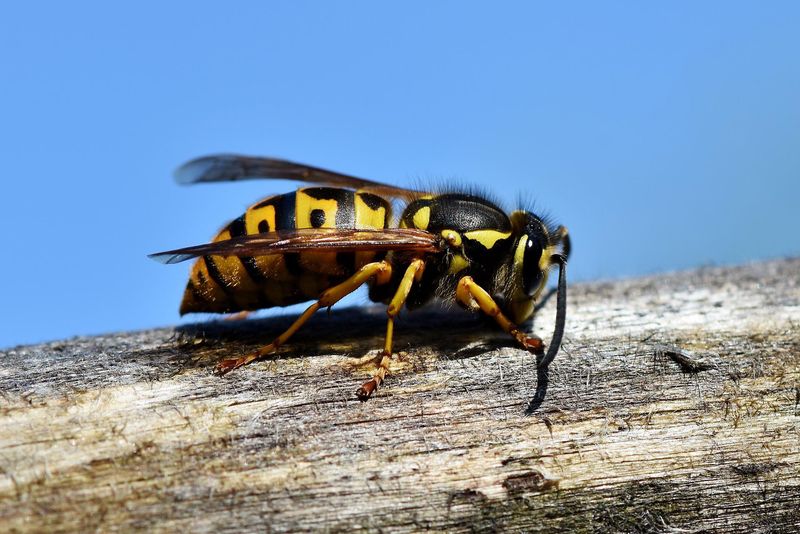
Yellow Jackets are aggressive wasps that can be found buzzing around Georgia’s forests, especially during late summer and fall. They are highly protective of their nests and will sting repeatedly if threatened.
These insects are attracted to food and sugary drinks, making picnic areas prime spots for encounters. Their stings can be painful and cause allergic reactions in some individuals.
To avoid attracting yellow jackets, keep food and drinks covered and dispose of trash promptly. If a swarm approaches, stay calm and move away slowly.
Fire Ants
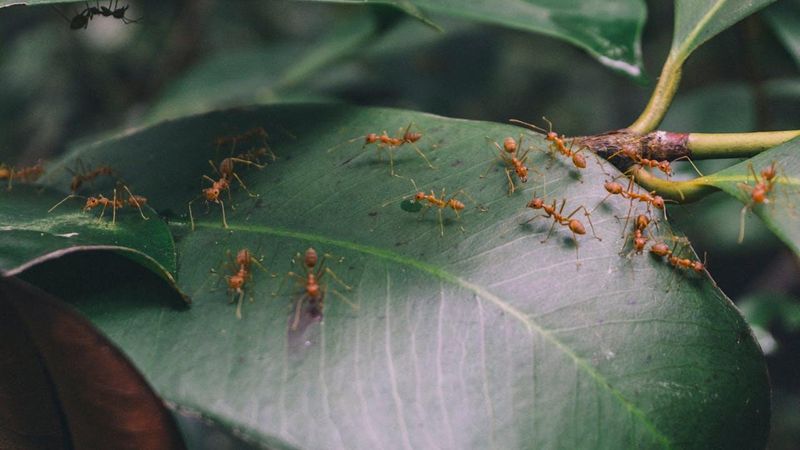
Fire Ants are small but formidable insects that create large mounds in Georgia’s forests. Their stings are painful and can cause severe allergic reactions in some people.
These ants are highly aggressive and will swarm when their nest is disturbed. They inject venom that causes burning sensations and itchy pustules.
When walking in areas known for fire ants, wear closed shoes and avoid stepping on their mounds. Promptly treat stings with cold compresses and antihistamines if needed.
Georgia Jumping Spider
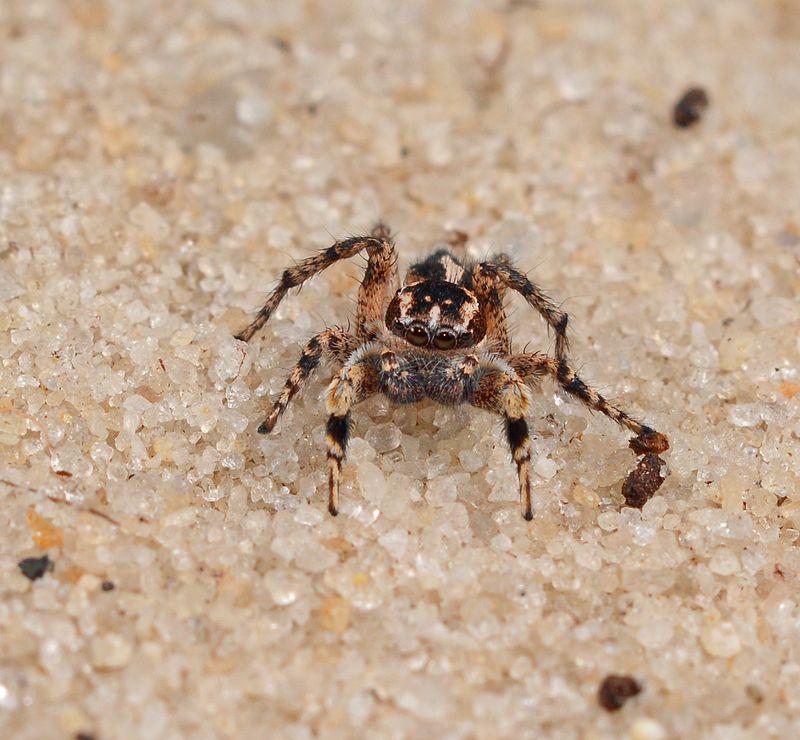
The Georgia Jumping Spider is a small yet intriguing creature, known for its ability to leap significant distances to catch prey. Their vivid eyes and quick movements make them fascinating to watch.
Though not dangerous to humans, their presence can startle those who are unaware. Jumping spiders are skilled hunters of insects, playing an important role in the ecosystem.
If you spot one, enjoy its acrobatics from a distance, as they contribute to controlling pest populations in the forest.
Cottonmouth Snake
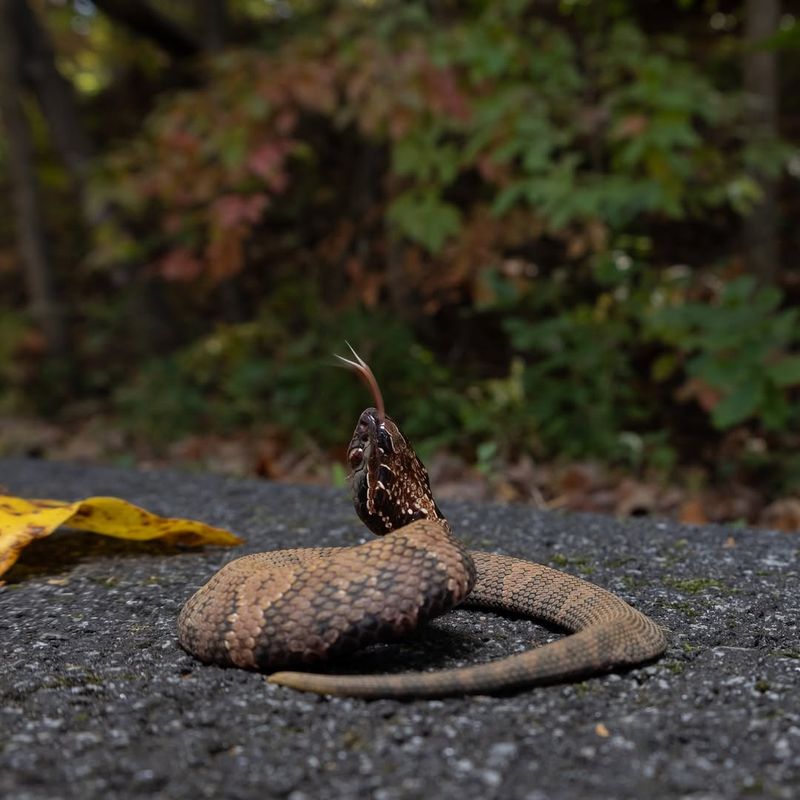
The Cottonmouth Snake, also known as the Water Moccasin, is often found near water bodies in Georgia’s forests. This snake is recognized by its dark, thick body and the distinctive white interior of its mouth.
They are semi-aquatic and can be aggressive if provoked. Cottonmouths are venomous, and their bite requires immediate medical attention.
When near water, keep an eye out for these snakes basking on logs or swimming. If encountered, give them a wide berth to avoid confrontation.
Timber Wolf
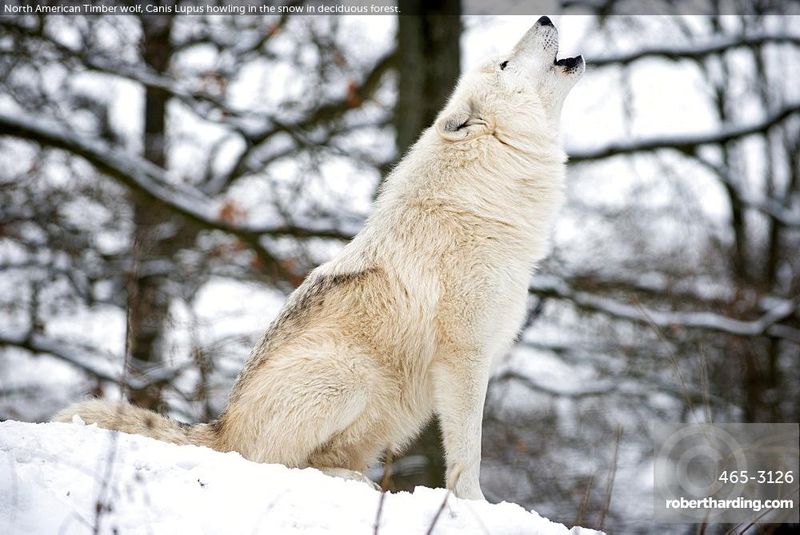
Though rare, Timber Wolves occasionally roam Georgia’s forests. These majestic creatures are known for their intelligence and pack behavior.
Wolves are usually wary of humans and tend to avoid them, but they can be dangerous if provoked or if their pack is threatened. They primarily hunt in packs, which increases their efficiency in taking down prey.
If you encounter a wolf, maintain eye contact and slowly back away. Do not run, as this can trigger a chase response.
Eastern Box Turtle

The Eastern Box Turtle, with its domed, colorful shell, is a common resident of Georgia’s forests. While not dangerous in the typical sense, they can carry salmonella, posing a risk to humans.
These turtles are slow-moving and often found crossing paths or basking in the sun. They’re known for their ability to fully retract into their shells for protection.
When observing these turtles, it’s best to admire them without handling. If you must move them off a path, do so gently in the direction they’re heading.
Pygmy Rattlesnake
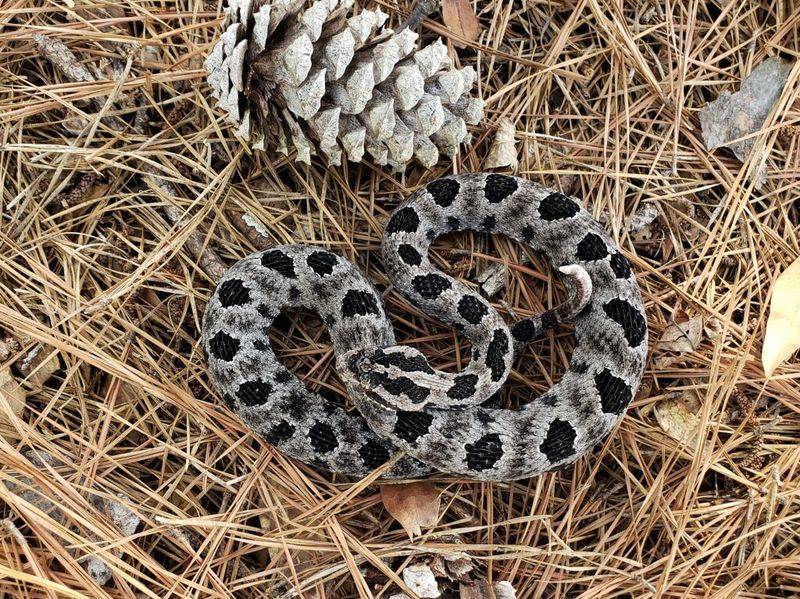
Pygmy rattlesnakes, despite their small size, pack a venomous punch that can be quite dangerous. These diminutive serpents are masters of camouflage, blending seamlessly into the forest floor with their mottled grey and brown scales. When threatened, they give a subtle warning with their tiny rattle, a sound that’s easily overlooked amidst the rustling leaves.
Their bite, though not typically fatal to humans, can cause considerable pain and should be treated promptly. It’s fascinating how something so small can demand such respect. If hiking in Georgia’s forests, always stay vigilant and watch your step.
Elusive Red Wolf
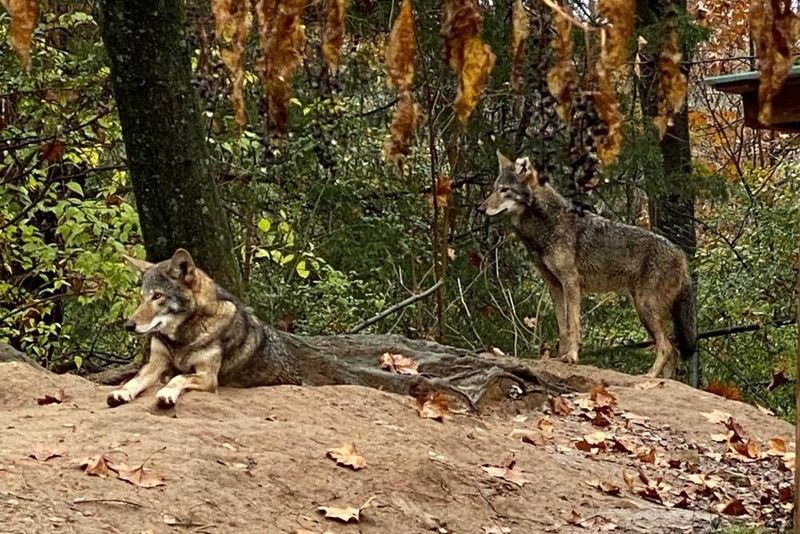
The red wolf, a symbol of wild beauty, is both rare and awe-inspiring. With its striking reddish coat and sharp, intelligent eyes, this predator moves silently through the forest, a testament to nature’s adaptability.
Though primarily nocturnal and wary of humans, encounters are not unheard of. They have a critical role in the ecosystem, controlling deer and rodent populations. Seeing one in Georgia’s forests is a rare treat.
These wolves are endangered, reminding us of the delicate balance in nature. Their presence in Georgia is a call to protect their dwindling habitats.

